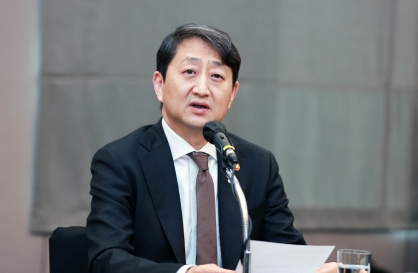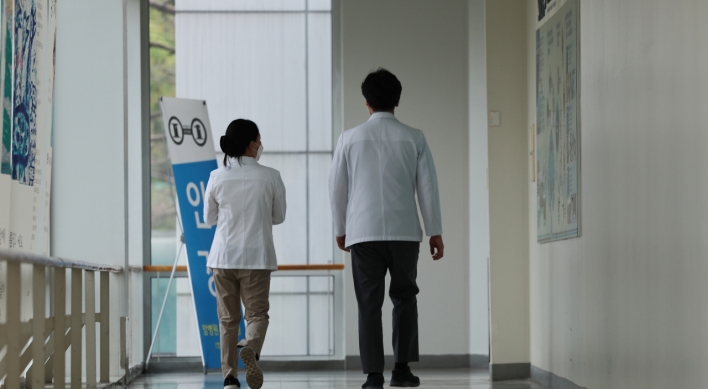How much of a difference do native English teachers make?
As public schools wind down NET programs, teachers look back on how effective their input was
By Korea HeraldPublished : March 12, 2013 - 20:31
This is the last in a two-part series on the native English teacher phaseouts in public schools. Intern reporter Lee Sang-ju contributed to this series. ― Ed.
Times have changed since Canadian Sabrina Hill first came to Korea in 2005 to teach English.
The English teacher program that year was gaining momentum with the number of native teachers in public schools reaching 1,178 and rising to 5,553 by 2008.
“We were treated as a treasured asset, something that the schools fought for when only a select few were allocated the budget to hire NETs,” she said.
But Hill, who was hired to a public school in Siheung, Gyeonggi Province, said the novelty of hiring native teachers has since worn off, and poor-performing teachers had given them a bad name. NETs were criticized for being ill prepared for their job, and Korean media and online campaigns even questioned their ethical behavior in and out of the classroom.
Currently, some English programs have been shifting toward Korean conversation teachers, and Korea’s public schools have shed more than 550 NET jobs for the 2013 school year, from the 8,520 in 2012.
“Each year, with the addition of more and more NETs, we were seen less as a commodity and more as a potential liability, certainly as a burden and hassle,” she added. “In many ways, I feel that the people and institutions of Korea have tired of having foreigners in the classrooms. Parents may like us, and that may be the only reason a few schools still employ natives.”
Her opinions are not isolated. As Seoul and Gyeonggi’s cuts in native English teacher numbers spark debate over their effectiveness, some NETs argue that they were not used efficiently.
Some said they received little instruction upon starting and were left to their own devices.
“At the beginning of the year, I was told to ‘do whatever I wanted’ in the classes, and didn’t have a textbook or curriculum to follow,” said Warwick Mons, who transferred to his third school since 2008 this month. “I actually preferred this arrangement, and was able to do some quite productive, enjoyable and interesting things with my students.”
But Mons and others said co-teachers often used the NET class as a free period to catch up on their own work or would take their students out to make up other classes. Some NETs argued that many foreign teachers ― 56.9 percent of whom had teaching qualifications in 2012, according to the Ministry of Education ― lacked the skills, training or ability to redesign or adapt textbooks.
Many teachers saw the biggest hindrances to the education system being class size, textbook reliance, curriculums geared to test performance, and infrequent classes.
“I have students in my fifth and sixth grade classes who still cannot read,” said one teacher at a rural school in Gyeonggi Province. This year, she started tutoring some weaker students during lunch, and saw them improve both in knowledge and class participation. She hopes that the government will develop a program or set up special free classes to help lower-level students ― though it seems unlikely since extra classes appear to be targeted to gifted students, she said.
Here for show
Hill, who has taught at five public schools and a university in Korea, says she was very involved in planning when she started, but over time schools have lost interest in improving their programs or receiving input from NETs, and become more rigid and focused on numbers.
“In the beginning, in 2005, I felt that I was valued, that I could contribute and offer my opinions and suggestions on curriculum and materials used in the classroom,” she said. “Now, I feel (like) no more than a talking head.”
She saw sentiment toward native English teachers deteriorate gradually over the years. Meanwhile, a late 2000s revamp of the national elementary curriculum added more English classes for third to sixth grade, meaning a single native teacher ― generally contracted to teach 22 classes a week ― could no longer teach all of a school’s English classes.
With the declining regard for the native teacher combined with an incapacity to cover the increased teaching load, Hill said, the effectiveness and practicality of a native teacher has diminished.
“In 2009, the new national curriculum was in the works ... and NETs were a dying breed. It was no longer financially viable to keep NETs employed at the same numbers or in the same way at most urban schools,” she said. “Some schools just can’t afford to have a NET teach all those classes, so why bother hiring one at all if there is no directive to employ one?”
Another teacher who has taught under both GEPIK and SMOE, and asked to not be named, claimed that policymakers couldn’t see what was happening on ground level.
“I have some eight years’ experience teaching English, and yet all the decisions concerning the school’s English program were made by people who have none and who barely speak it themselves. I had no input whatsoever and neither did my co-teachers who also had training in English teaching,” she said.
She suggested that native teachers would be better used at higher levels where it was difficult to find competent Korean English instructors.
Cultural bridge
But the biggest loss for the students, many NETs said, could be the cultural aspect of learning how to communicate with a foreigner ― the one element that separated English from being just another class.
Hill believes that aside from the teachers’ language abilities, the children will lose a good opportunity to learn about different cultures.
“If I had a teacher from Korea, France, or Argentina as a child, I would have learned so much and seen the world in such a different way,” she said. “Engaging in a meaningful exchange of culture through language as a pretext is an invaluable lesson for these young minds.”
Megan Farrell, a native English teacher in Bucheon, Gyeonggi Province, thinks that phasing out the program particularly at the elementary level would be a mistake at a time when being open to different cultures is becoming increasingly important.
“Many of my students laugh or make comments such as ‘ugly,’ ‘monster’ or ‘dirty’ when seeing people of other nationalities. This reaction is partly due to the fact that kids will be kids, but also partly to their general lack of exposure to racial and cultural diversity,” said Farrell, who has taught in Korea since 2007.
But one scholar, who specializes in English for academic purposes, says NETs are no longer the only source of multicultural exposure. If Korea does away with native English teachers, the increasingly diverse population, including non-teaching workers and foreign spouses, will continue to encourage a global outlook.
“Korea isn’t what it was 10 years ago, with most foreign nationals either from the E-2 (teaching) visa community or the USFK (U.S. military),” he said. “In many ways Korea is more open-minded to foreigners than many Western countries. Times have changed and the aging ghosts of the nation are slowly fading into the distant past.”
Nonetheless, Farrell argues that for as long as native English teachers have the chance, they should use it to make a positive influence in their students’ multicultural education.
“I value my job and take what I do very seriously. I hope that other teachers also take advantage of the opportunity to make a positive impact on their students and communities,” she said. “We have the potential to make many young people’s experience of a ‘foreigner’ a good one, which may go a long way to encouraging a more socially aware generation.”
By Elaine Ramirez (elaine@heraldcorp.com)
Times have changed since Canadian Sabrina Hill first came to Korea in 2005 to teach English.
The English teacher program that year was gaining momentum with the number of native teachers in public schools reaching 1,178 and rising to 5,553 by 2008.
“We were treated as a treasured asset, something that the schools fought for when only a select few were allocated the budget to hire NETs,” she said.
But Hill, who was hired to a public school in Siheung, Gyeonggi Province, said the novelty of hiring native teachers has since worn off, and poor-performing teachers had given them a bad name. NETs were criticized for being ill prepared for their job, and Korean media and online campaigns even questioned their ethical behavior in and out of the classroom.
Currently, some English programs have been shifting toward Korean conversation teachers, and Korea’s public schools have shed more than 550 NET jobs for the 2013 school year, from the 8,520 in 2012.
“Each year, with the addition of more and more NETs, we were seen less as a commodity and more as a potential liability, certainly as a burden and hassle,” she added. “In many ways, I feel that the people and institutions of Korea have tired of having foreigners in the classrooms. Parents may like us, and that may be the only reason a few schools still employ natives.”
Her opinions are not isolated. As Seoul and Gyeonggi’s cuts in native English teacher numbers spark debate over their effectiveness, some NETs argue that they were not used efficiently.
Some said they received little instruction upon starting and were left to their own devices.
“At the beginning of the year, I was told to ‘do whatever I wanted’ in the classes, and didn’t have a textbook or curriculum to follow,” said Warwick Mons, who transferred to his third school since 2008 this month. “I actually preferred this arrangement, and was able to do some quite productive, enjoyable and interesting things with my students.”
But Mons and others said co-teachers often used the NET class as a free period to catch up on their own work or would take their students out to make up other classes. Some NETs argued that many foreign teachers ― 56.9 percent of whom had teaching qualifications in 2012, according to the Ministry of Education ― lacked the skills, training or ability to redesign or adapt textbooks.
Many teachers saw the biggest hindrances to the education system being class size, textbook reliance, curriculums geared to test performance, and infrequent classes.
“I have students in my fifth and sixth grade classes who still cannot read,” said one teacher at a rural school in Gyeonggi Province. This year, she started tutoring some weaker students during lunch, and saw them improve both in knowledge and class participation. She hopes that the government will develop a program or set up special free classes to help lower-level students ― though it seems unlikely since extra classes appear to be targeted to gifted students, she said.
Here for show
Hill, who has taught at five public schools and a university in Korea, says she was very involved in planning when she started, but over time schools have lost interest in improving their programs or receiving input from NETs, and become more rigid and focused on numbers.
“In the beginning, in 2005, I felt that I was valued, that I could contribute and offer my opinions and suggestions on curriculum and materials used in the classroom,” she said. “Now, I feel (like) no more than a talking head.”
She saw sentiment toward native English teachers deteriorate gradually over the years. Meanwhile, a late 2000s revamp of the national elementary curriculum added more English classes for third to sixth grade, meaning a single native teacher ― generally contracted to teach 22 classes a week ― could no longer teach all of a school’s English classes.
With the declining regard for the native teacher combined with an incapacity to cover the increased teaching load, Hill said, the effectiveness and practicality of a native teacher has diminished.
“In 2009, the new national curriculum was in the works ... and NETs were a dying breed. It was no longer financially viable to keep NETs employed at the same numbers or in the same way at most urban schools,” she said. “Some schools just can’t afford to have a NET teach all those classes, so why bother hiring one at all if there is no directive to employ one?”
Another teacher who has taught under both GEPIK and SMOE, and asked to not be named, claimed that policymakers couldn’t see what was happening on ground level.
“I have some eight years’ experience teaching English, and yet all the decisions concerning the school’s English program were made by people who have none and who barely speak it themselves. I had no input whatsoever and neither did my co-teachers who also had training in English teaching,” she said.
She suggested that native teachers would be better used at higher levels where it was difficult to find competent Korean English instructors.
Cultural bridge
But the biggest loss for the students, many NETs said, could be the cultural aspect of learning how to communicate with a foreigner ― the one element that separated English from being just another class.
Hill believes that aside from the teachers’ language abilities, the children will lose a good opportunity to learn about different cultures.
“If I had a teacher from Korea, France, or Argentina as a child, I would have learned so much and seen the world in such a different way,” she said. “Engaging in a meaningful exchange of culture through language as a pretext is an invaluable lesson for these young minds.”
Megan Farrell, a native English teacher in Bucheon, Gyeonggi Province, thinks that phasing out the program particularly at the elementary level would be a mistake at a time when being open to different cultures is becoming increasingly important.
“Many of my students laugh or make comments such as ‘ugly,’ ‘monster’ or ‘dirty’ when seeing people of other nationalities. This reaction is partly due to the fact that kids will be kids, but also partly to their general lack of exposure to racial and cultural diversity,” said Farrell, who has taught in Korea since 2007.
But one scholar, who specializes in English for academic purposes, says NETs are no longer the only source of multicultural exposure. If Korea does away with native English teachers, the increasingly diverse population, including non-teaching workers and foreign spouses, will continue to encourage a global outlook.
“Korea isn’t what it was 10 years ago, with most foreign nationals either from the E-2 (teaching) visa community or the USFK (U.S. military),” he said. “In many ways Korea is more open-minded to foreigners than many Western countries. Times have changed and the aging ghosts of the nation are slowly fading into the distant past.”
Nonetheless, Farrell argues that for as long as native English teachers have the chance, they should use it to make a positive influence in their students’ multicultural education.
“I value my job and take what I do very seriously. I hope that other teachers also take advantage of the opportunity to make a positive impact on their students and communities,” she said. “We have the potential to make many young people’s experience of a ‘foreigner’ a good one, which may go a long way to encouraging a more socially aware generation.”
By Elaine Ramirez (elaine@heraldcorp.com)
-
Articles by Korea Herald






![[KH Explains] Can tech firms' AI alliances take on Nvidia?](http://res.heraldm.com/phpwas/restmb_idxmake.php?idx=644&simg=/content/image/2024/05/07/20240507050619_0.jpg&u=)


![[Grace Kao, Meera Choi] Has money displaced romance on dates?](http://res.heraldm.com/phpwas/restmb_idxmake.php?idx=644&simg=/content/image/2024/05/06/20240506050233_0.jpg&u=)








![[K-pop’s dilemma] Time, profit pressures work against originality](http://res.heraldm.com/phpwas/restmb_idxmake.php?idx=652&simg=/content/image/2024/05/08/20240508050705_0.jpg&u=20240508171126)
![[Today’s K-pop] NCT Dream to drop pre-release from 2nd Japan single](http://res.heraldm.com/phpwas/restmb_idxmake.php?idx=642&simg=/content/image/2024/05/08/20240508050725_0.jpg&u=)